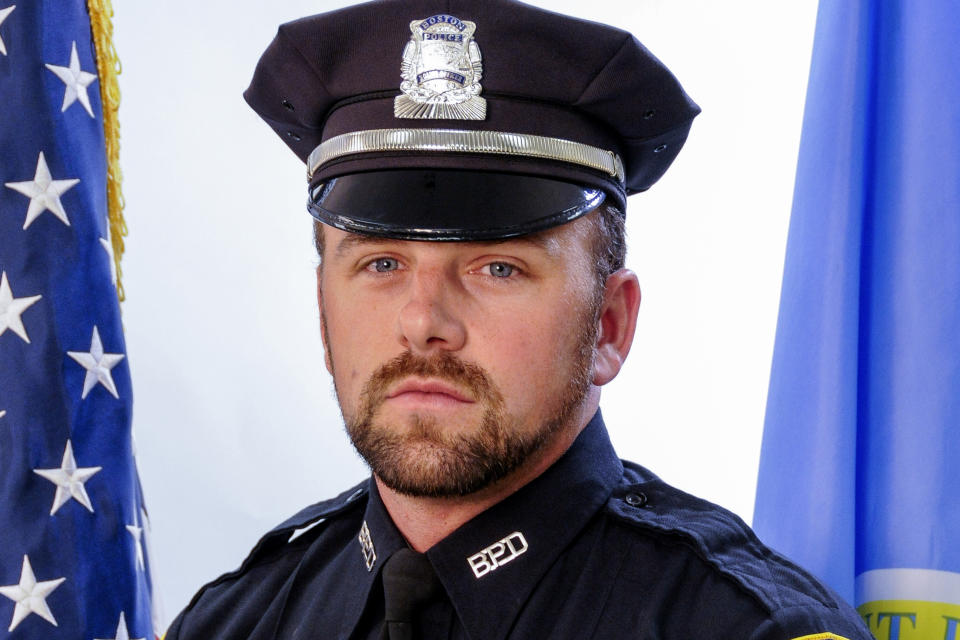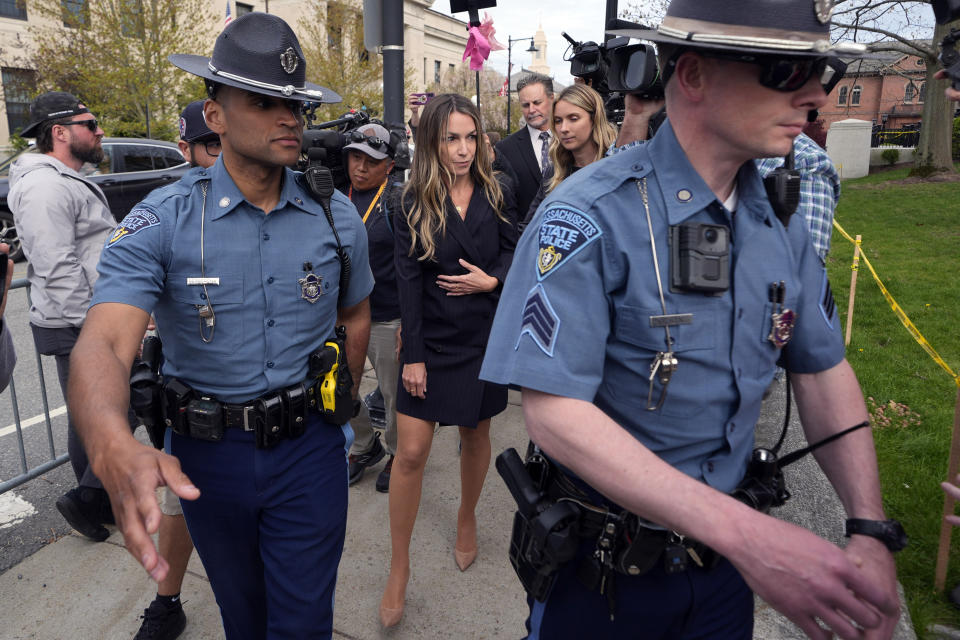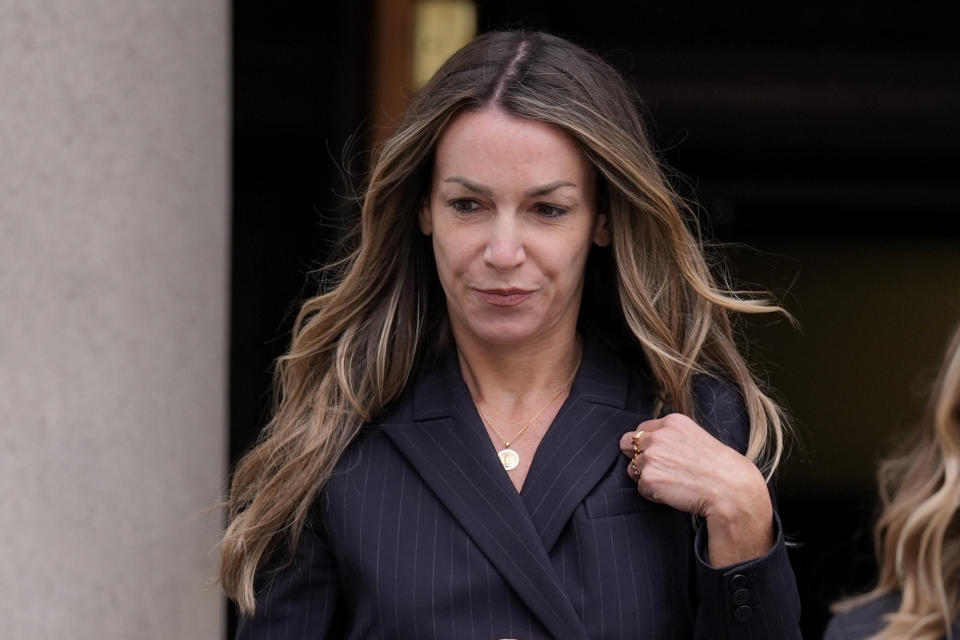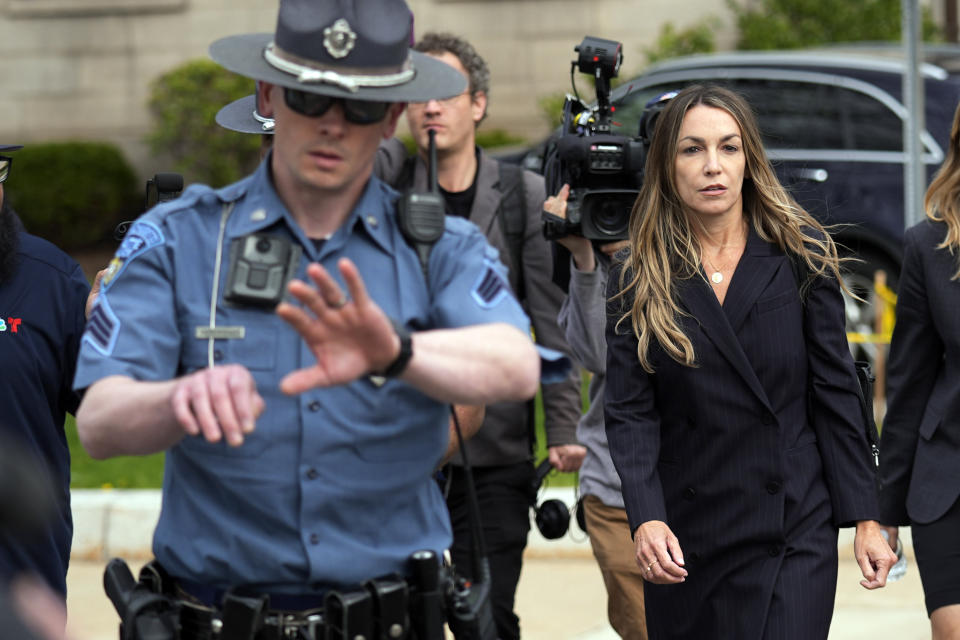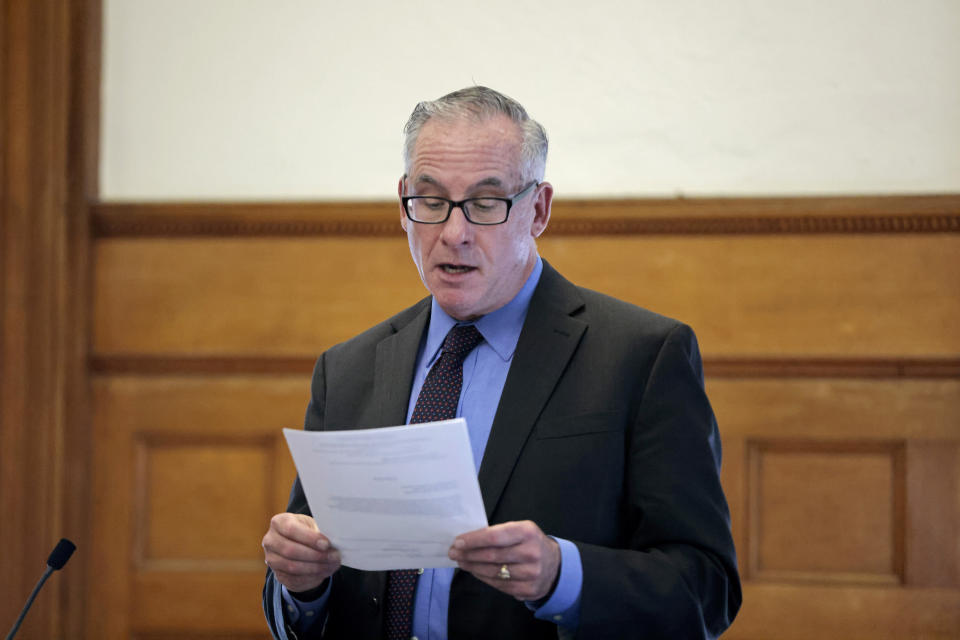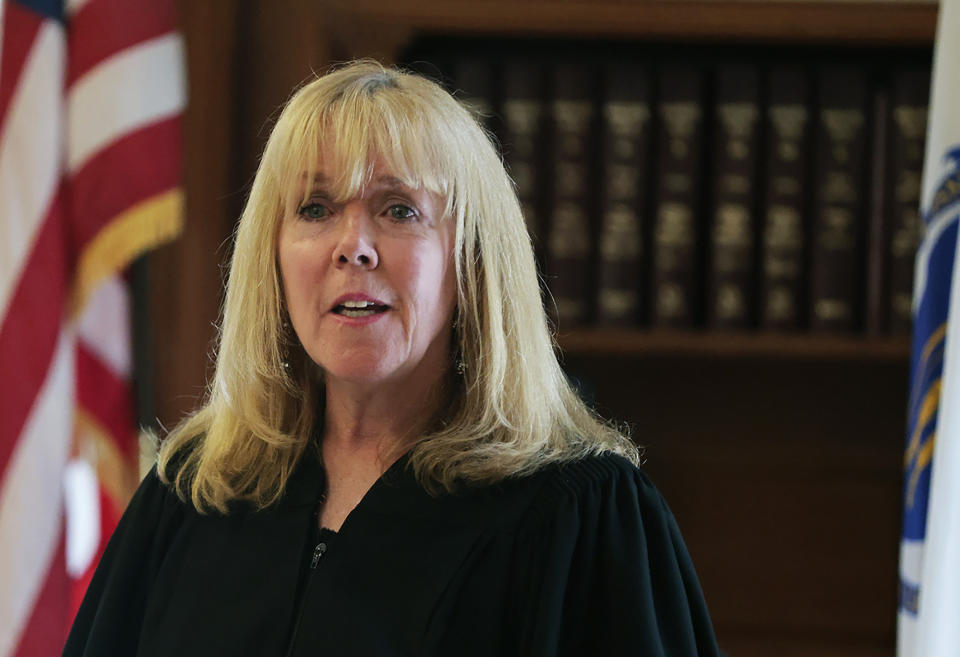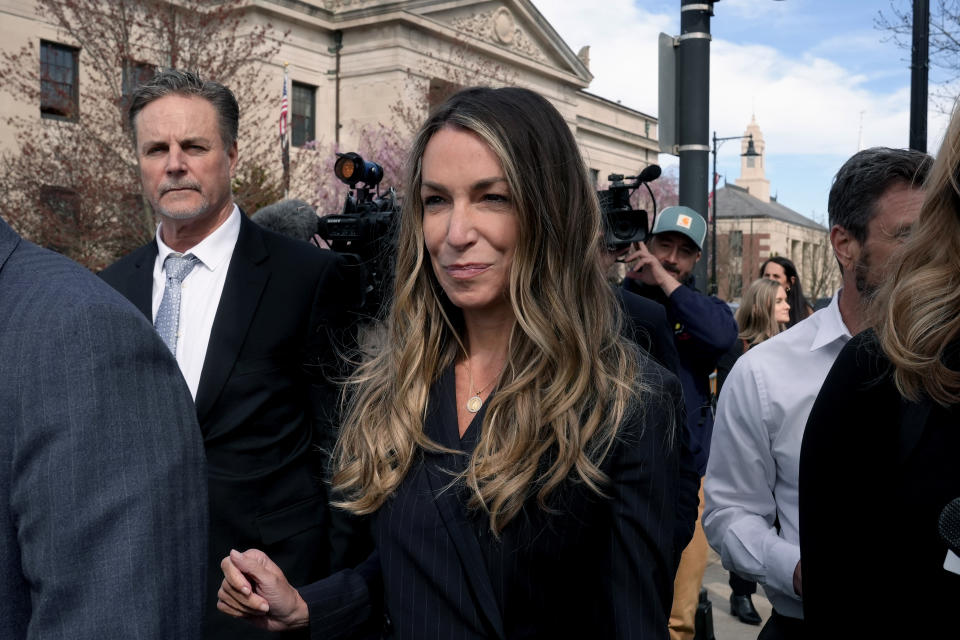Trial starts in conspiracy-fueled case of girlfriend charged in Boston police officer's death
- Oops!Something went wrong.Please try again later.
DEDHAM, Mass. (AP) — The trial of a Massachusetts woman who allegedly killed her Boston police officer boyfriend by intentionally driving her SUV into him opened Monday with prosecutors saying a cracked taillight and her own words to firefighters that she "hit him" will prove she is guilty.
Karen Read, 44, of Mansfield, faces several charges including second degree murder in the death of John O’Keefe, 46, in 2022. The 16-year police veteran was found unresponsive outside the home of a fellow Boston police officer and later was pronounced dead at a hospital. Read has pleaded not guilty and is free on bond.
“The defendant, Karen Read, is guilty of murder in the second degree, striking the victim, Mr. O’Keefe, with her car, knocking him back onto the ground, striking his head on the ground, causing the bleeding in his brain and swelling, and then leaving him there for several hours in a blizzard," Assistant District Attorney Adam Lally told the jury.
As the case unfolded, the defense's strategy has been to portray a vast conspiracy involving a police coverup. It has earned Read a loyal band of supporters — who often can be found camped out at the courthouse — and has garnered the case national attention.
“Karen Read was framed,” Read's defense attorney David Yannetti told the jury. “Her car never struck John O'Keefe. She did not cause his death and that means somebody else did.”
The couple had been to two bars on a night in January 2022, prosecutors alleged, and were then headed to a party in nearby Canton. Read said she did not feel well and decided not to attend. Once at the home, O’Keefe got out of Read's vehicle, and while she made a three-point turn, she allegedly struck him and then drove away, prosecutors said.
Prosecutors haven't said where they think she went after that. However, they allege she later became frantic after she said she couldn't reach O'Keefe. She returned to the site of the party, where she and two friends found O’Keefe covered in snow. While on the scene, firefighters said she told them “I hit him, I hit him, I hit him.”
He was pronounced dead at a hospital. An autopsy concluded he died from head trauma and hypothermia.
Investigators found a cracked right rear tail light near where O'Keefe was found and scratches on her SUV. Prosecutors are also expected to present evidence of injuries suffered by O'Keefe consistent with him being hit by the car and strains in the couple's relationship including a “20 minute screaming match” witnessed by O'Keefe's two adopted children they had while on vacation in Aruba.
The defense has spent months arguing in court that the case was marred by conflicts of interest and accused prosecutors of presenting false and deceptive evidence to the grand jury. In a motion to dismiss the case, the defense called the prosecution's case “predicated entirely on flimsy speculation and presumption.” A Superior Court judge denied the request.
On Monday, Yannetti argued that close relationships between investigators and those in the house resulted in authorities focusing solely on Reid, whom the defense described as a “convenient outsider.”
Yannetti also claimed investigators failed to consider the possibility that O'Keefe got into a fight at the party and was left for dead outside. While not offering evidence of who was responsible, they laid out of a series of missteps in the investigation — failing to investigate a history of animosity between O'Keefe and the family who owned the home nor searching the home for evidence of a struggle.
They also are expected to provide evidence that Read's taillight was damaged when she hit O'Keefe's car hours later at their home — not at the party — and dispute that the couple had a strained relationship. They got along well that night and had made plans for several trips in the months ahead.
“You will question the Commonwealth's theory of the case,” Yannetti said. “You will question the quality of the Commonwealth's evidence. You will question the veracity of the Commonwealth's witnesses and you will question their shoddy and biased investigation.”
In August, Norfolk District Attorney Michael Morrissey criticized suggestions that state and local enforcement were orchestrating a cover up, saying there is no evidence to support O'Keefe was in the Canton home where the party took place nor was in a fight.
The idea that multiple police departments and his office would be involved in a “vast conspiracy” in this case is “a desperate attempt to reassign guilt.”
Such comments have done little to silence Read's supporters, dozens of whom dressed in pink for the first day of the trial.
Most days, a few dozen supporters — some carrying signs or wearing shirts reading “Free Karen Read” — can be seen standing near the courthouse. Many had no connection to Read, who worked in the financial industry and taught finance at Bentley University before this case.
Among her most ardent supporters is a confrontational blogger, Aidan Timothy Kearney, known as “Turtleboy." He has been charged with harassing, threatening and intimidating witnesses in the case. For months, he has raised doubts about Read's guilt on his blog, which has become a popular page for those who believe Read is innocent.
Friends and family of O’Keefe fear the focus on Read and the conspiracy theories are taking away from the fact a good man was killed.
The first witness in the trial was O'Keefe's brother, Paul, who described in harrowing detail having to rush to the hospital that morning, walking past Read, who was repeatedly screaming “Is he alive?" and into a room where his brother's body was covered partially with a white sheet.
“He was pretty banged up,” Paul O'Keefe told the jury, detailing how his brother had blood running down his mouth and nose and markings on his right arm. “What really stood out to me was the eyes. It was as if there were ping pong balls under his eyelids.”


